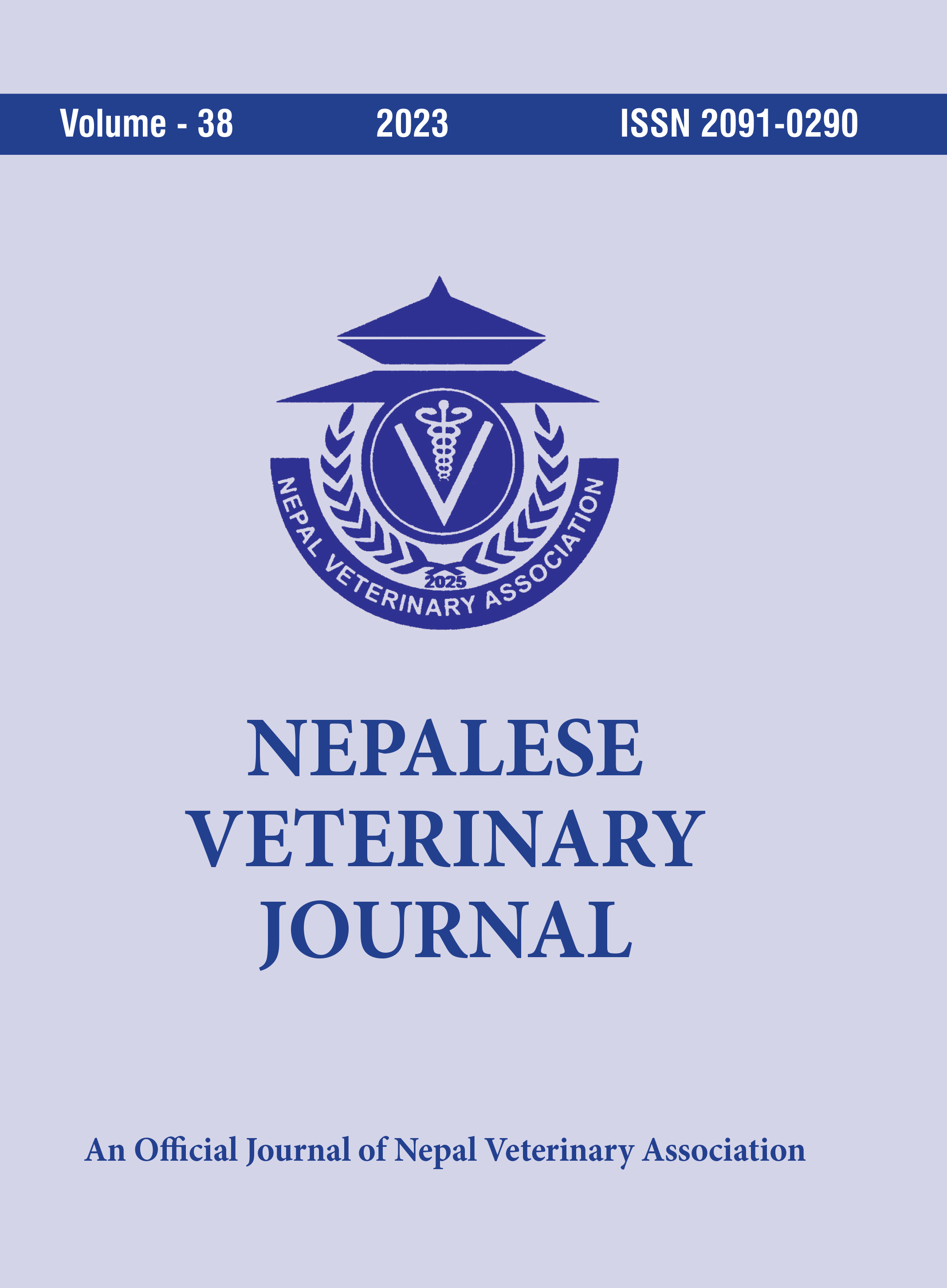Prevalence of Fish Tapeworm – Diphyllobothrium latum in Commercial Fish Farms of Chitwan District, Nepal
DOI:
https://doi.org/10.3126/nvj.v38i1.55844Keywords:
Diphyllobothrium latum,, public health, ZoonoticAbstract
Diphyllobothrium latum, commonly known as “fish- tapeworm”, has a zoonotic importance as it causes Diphyllobothriasis in humans. Fish, one of the highly consumed meat sources by human, also acts as second intermediate host for D. latum. There are several reports indicating consumption of D. latum infested poorly cooked fish causing Diphyllobothriasis in human. Thus, D. latum in fish can be considered as a major risk factor for Diphyllobothriasis in humans. Despite being a public health concern, no scientific data regarding the prevalence of D. latum in fish population of commercial fish farms of Nepal exists. The objective of this study was to bridge this knowledge gap by estimating the prevalence of D. latum in commercial fish farms of Chitwan district of Nepal. The study was conducted in six municipalities of Chitwan, Nepal. Out of 46 registered fish farms of Chitwan district, 42 farms were sampled in this study. The fish sampled from each farm were brought to the Histology laboratory of Department of Aquatic Resource Management of Agriculture and Forestry University, Nepal maintaining cold chain system and were dissected for feces collection. For qualitative parasitological examination of feces, sedimentation and centrifugal flotation method were used. Out of 42 farms sampled, 16 (38.10%) fish farms were found positive for presence of any kind of gastrointestinal parasites. Out 42 commercial fish farms examined, 9 (21.4%) farms were found positive for D. latum. Besides, D. latum fish farms were also found positive for Contracaecum sp. (19%), Coccidia (11.9%) and Eustrongyloides (2.4%). This research indicated that the prevalence of D. latum was more than 20% in commercial fish farms of Chitwan district showing possibility of zoonotic transmission to human population. Management practices of fish farmers must include ways to prevent D. latum infestation in fish population. Moreover, general public should be made aware about prevalence of D. latum in fish and its possible risk to human health along with its preventive measures for safe fish consumption.
Downloads
Downloads
Published
How to Cite
Issue
Section
License
© Nepal Veterinary Association




